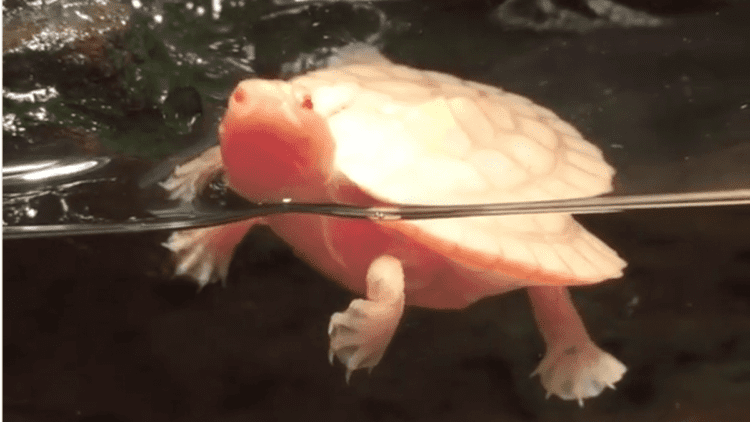Leatherback sea turtle nest discovered on Outer Banks island is first since 2012

Tuesday, June 20 was a happy day on North Carolina’s Outer Banks for conservationists and animal-lovers. A routine check on Ocracoke Island revealed a leatherback sea turtle nest filled with more than 90 eggs.
It’s the first such nest on Ocracoke since 2012, according to Cape Hatteras National Seashore (CHNS), which announced the discovery on social media. Other turtles, including green sea turtles and Kemp’s Ridley turtles, have laid eggs there this season.
“Since keeping record, this is only the sixth Leatherback Sea Turtle to nest on Cape Hatteras National Seashore,” reads a Facebook post from the national park.
CHNS also shared photos of the nest and, most impressively, the enormous tracks from the intrepid mama turtle:
MORE: Watch the sweet moment this chimpanzee sees the sky for the first time
Ancient, massive creatures that travel the globe, leatherbacks are the largest sea turtles in the world; they can get to six feet long and 1,100 pounds. According to the National Oceanic and Atmospheric Administration, they can swim more than 10,000 miles a year and dive almost 4,000 feet under the surface. They may stay under for up to 85 minutes at a time!
Sea turtles stay in the ocean all of their lives, except for females crawling out to lay their eggs during warmer months. NOAA says that females nest only every two to four years but may lay eggs multiple times during a nesting season, so the mom who visited Ocracoke will probably lay again.
And when leatherbacks lay eggs, they really go for it — each clutch contains about 100 eggs. These eggs incubate for about 60 days before baby turtles start to emerge.
It’s a lot of work for mom, but essential for the species’ survival. Only 6% of leatherback hatchlings survive their first year, according to The Leatherback Trust. The rest are picked off by predators.
Not only that, leatherbacks face many challenges. Commercial fishing nets, loss of nesting habitat due to development, ocean pollution (including marine debris that can be mistaken for food) and climate change all pose a threat.
Leatherback sea turtles are currently listed as an endangered species in the U.S. under the Endangered Species Act; The Sea Turtle Conservancy estimates 34,000 to 36,000 nesting females remain in the wild. The Internation Union for Conservation of Nature’s Red List, which assessed the species in 2013, notes their population is vulnerable and decreasing.
That leatherback mom chose the right nesting spot when she laid a clutch on Ocracoke. CHNS staff quickly moved her nest away from the high tide line to keep the eggs safe.
You can help the hatchlings have a better chance of survival whether you live nearby and visit the shore or not. Participate in beach clean-ups and reduce plastic use. Don’t release balloons. Fill in holes, remove beach equipment like chairs and boats and knock down sandcastles before leaving the beaches, as they can be obstacles. Turn off lights near the beach, and don’t disturb nesting turtles.






